A convenient oven and an indescribable national flavor: how to make an Uzbek tandoor from clay?
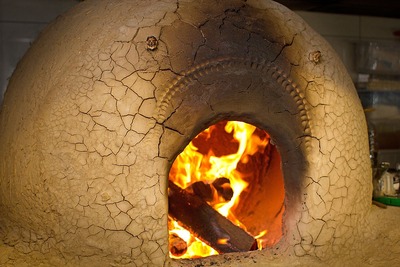
Tandoor is a type of oven-grill or barbecue jug-shaped, which is used for cooking in Asia.
Such ovens became popular in Russia too. Fragrant crispy flatbreads and samsa are baked on the clay walls of the tandoor. Meat fried in such an oven will be juicy and tasty.
Uzbeks use local clay to create the product. The main material used to mold the tandoor is kaolin clay. It has light yellow or light gray coloring. This type of clay consists of silicon dioxide (more than 40%) And aluminum (up to 35%).
Content
Tools and materials for Uzbek tandoor
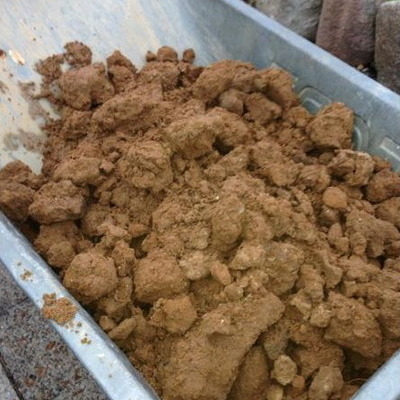
To make a tandoor with your own hands, you need to adhere to manufacturing technologyBuilding such a stove will require time and patience.
Before construction, you need to acquire the necessary tools and materials:
- fireproof and facing bricks;
- clay, cement, sand and other fillers (crushed stone, fiber);
- reinforced grating, wooden barrel, metal pipe;
- construction equipment and containers for preparing the solution;
- with a construction mixer, grinder or machine for cutting bricks.
Preparing clay for the working mixture
If the source material is not pure (there are impurities), then it must be soak in a barrel. Water is poured in excess and mixed thoroughly. After the clay solution is properly saturated, the stones will begin to settle, and grass and other debris will float.
Everything that has accumulated on top of the barrel needs to be drained, and Place the cleaned clay into a flat containerIn this tank, pure clay can stand for one day to several weeks. The tank is placed in the shade or another cool place. After the solution has settled, a layer of water may form on top, which is drained. This is done to prevent cracks from appearing on the surface of the tandoor after drying. Ready-to-use clay is soft and pleasant to the touch.
Specifics of solution preparation
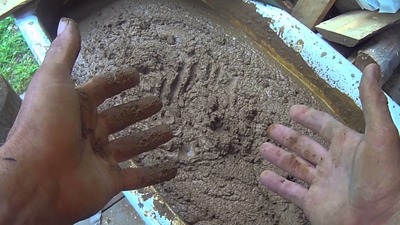
Some masters advise adding a little bit to the clay soda (one tablespoon per 10 liters working solution). You can also use as a filler liquid glass.
It will give the clay plasticity and will reduce the risk of cracks arising under the influence of temperature changes. This component is non-toxic, since it contains quartz sand, soda and water.
Adding fillers
Immediately after the clay solution is soaked in water, it is added wool: goat, sheep or camel. Sometimes instead of such a filler they use strawHowever, wool is still preferable: goat wool has sufficient stiffness and length, it is much more difficult to use sheep wool, which is curly.
Attention! If the master plans to create a standard-sized tandoor with a diameter 80 cm, he will need 1.5-2 kg of wool. All of the listed components must ultimately be mixed into a homogeneous mass.
Stir until done
By using wool, it will be possible to achieve the required heat capacity and make the structure easierWhen the surface of the tandoor is burned, the villi burn out, and small pores form in the walls. The latter retain the heat needed for cooking for a long time.
The indigenous population of Asian countries carefully kneaded the solution with feet. But modern masters use it for this mixer. The process continues until the consistency of the clay begins to resemble thick sour creamAfter this, the solution is kneaded until a material similar to plasticine is obtained, from which it is easy to sculpt.
How to make a tandoor oven with your own hands?
A person who decides to build a tandoor should pay special attention to its dimensions.
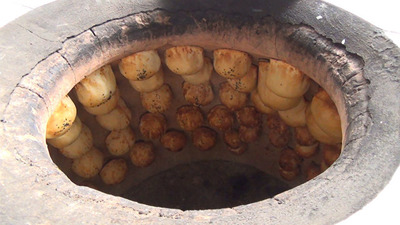
Any dishes, including flatbreads and meat, are placed inside ovens only then, when all the wood burns out. In this regard, the size of the device directly affects the number of servings that can be prepared at one time.
It is also worth paying attention to thickness of the walls. If the design is portable, it is better to take care of this first.
Stationary the oven can be brickedThe tandoor has the shape of an egg with smooth walls inside.
Preparing the foundation
After choosing a place to install the stove, a hole is dug two bricks deep, its bottom is filled up sand. In some cases it is placed reinforcing grid, after which the entire structure is filled with ordinary cement mortar.
Creating a foundation
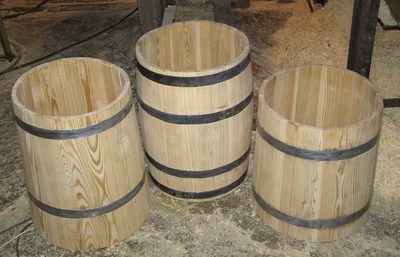
The base for the tandoor can be a regular one barrel from under cucumbers or cabbage:
- The container is washed and filled with water.
- After 2 weeks aging the wood will begin to swell. Then the water is poured out, the wooden barrel is carefully coated with vegetable oil from the inside.
- The container is tightly wrapped with rope, but in such a way that the hoops are not pinched.
- After this, the hoops are cut and removed. A hole equal in diameter to the mouth of the tandoor is cut out in the bottom of the resulting structure.
Attention! To create temporary cushion You can use bricks laid directly on the ground. You also need to take care of the readiness of the furnace mortar.
Installing the molding cone
In some cases, to make sculpting more convenient, use a template. It is made from moisture-resistant cardboard, which is shaped into a cone. For stability, the inside is filled with sand.
Forming the walls and creating the lid
The barrel is placed on a pillow, and the inside is coated a layer of clay with a thickness of 60-70 mmAfter this, the structure is turned upside down and placed on 4-6 bricks so that there is a gap at the bottom.
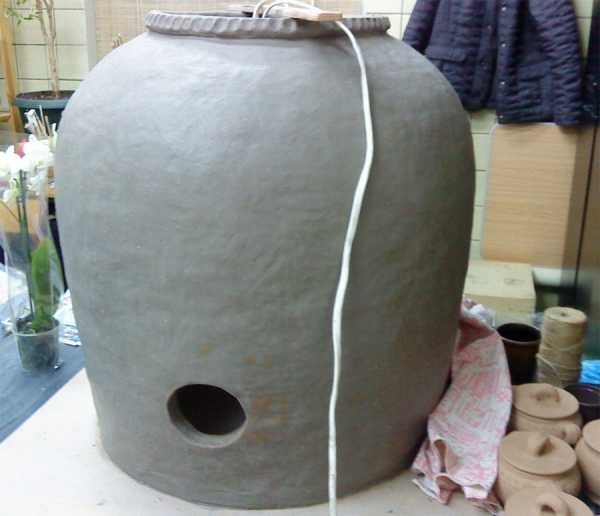
Photo 1. Drying clay tandoor on a stand. A small hole for blowing in the bottom will provide better combustion.
After 2 weeks the binding is removed. If the last rivet has fallen off and the body has dried out sufficiently, you can start firing.
For normal operation of the tandoor, they make round cover made of sheet steel thickness 3 mm. This material is also used to create a blower (you can use a pipe with a diameter of 5-10 cm).
Drying, initial firing, crack treatment
If the tandoor is also used for baking, then after drying (2-4 weeks under a canopy) it is lined from the inside with clay mortar. Before lining, the inner surface must be sprayed with a spray bottle.
In each specific case, the tandoor has its own characteristics. The thicker wall, the more time will be needed for drying.
Important! If cracks appear in the walls of the tandoor, they must be cover with clay-sand mixtureThen the firing is repeated.
Insulation and external finishing
They build around the clay structure brick wallsThe space between the walls is filled with sand or other heat-absorbing material.
The outer surface can be decorated with tiles, plaster, natural stone and other materials.
Possible problems
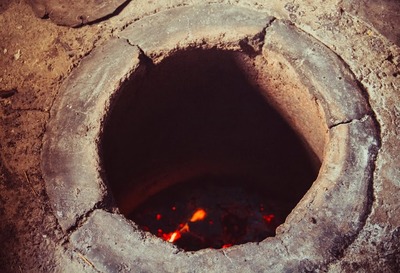
It is unlikely that you will be able to build such a stove the first time: in most cases, a tandoor turns out crooked And cracks during surface firing.
To prevent this, the design First they warm it up with smoke. The fire is lit inside the tandoor. Wood is gradually added, and the heating process is slow. within 8-10 hours.
Useful video
Watch a video showing how a tandoor is made from clay in Tajikistan with your own hands.
Conclusions
A tandoor made with your own hands will become an indispensable device, which can be used during rest. Despite the fact that the design of the stove is not particularly complicated, construction process tandoor very labor-intensive and requires certain experience and knowledge.
Because the flame in the tandoor reaches one meter, the oven It is not recommended to place it under trees or canopies. During cooking tandoor heats up to almost 800 °C, and therefore its walls cannot be touched with hands. Therefore, special tools and gloves are used for safety.









Comments